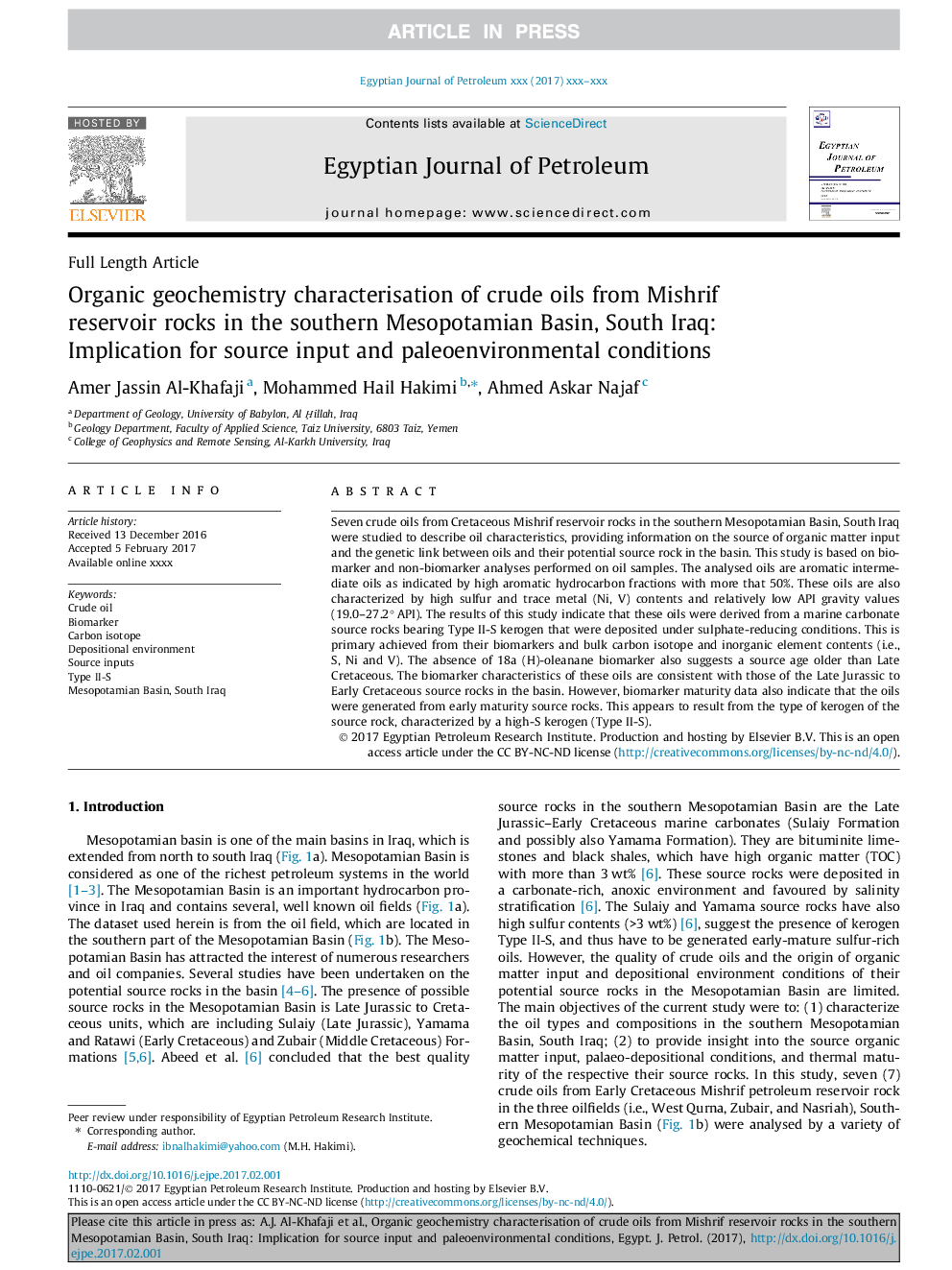| Article ID | Journal | Published Year | Pages | File Type |
|---|---|---|---|---|
| 8127727 | Egyptian Journal of Petroleum | 2018 | 14 Pages |
Abstract
Seven crude oils from Cretaceous Mishrif reservoir rocks in the southern Mesopotamian Basin, South Iraq were studied to describe oil characteristics, providing information on the source of organic matter input and the genetic link between oils and their potential source rock in the basin. This study is based on biomarker and non-biomarker analyses performed on oil samples. The analysed oils are aromatic intermediate oils as indicated by high aromatic hydrocarbon fractions with more that 50%. These oils are also characterized by high sulfur and trace metal (Ni, V) contents and relatively low API gravity values (19.0-27.2° API). The results of this study indicate that these oils were derived from a marine carbonate source rocks bearing Type II-S kerogen that were deposited under sulphate-reducing conditions. This is primary achieved from their biomarkers and bulk carbon isotope and inorganic element contents (i.e., S, Ni and V). The absence of 18a (H)-oleanane biomarker also suggests a source age older than Late Cretaceous. The biomarker characteristics of these oils are consistent with those of the Late Jurassic to Early Cretaceous source rocks in the basin. However, biomarker maturity data also indicate that the oils were generated from early maturity source rocks. This appears to result from the type of kerogen of the source rock, characterized by a high-S kerogen (Type II-S).
Related Topics
Physical Sciences and Engineering
Energy
Energy (General)
Authors
Amer Jassin Al-Khafaji, Mohammed Hail Hakimi, Ahmed Askar Najaf,
